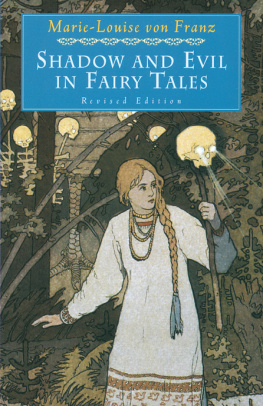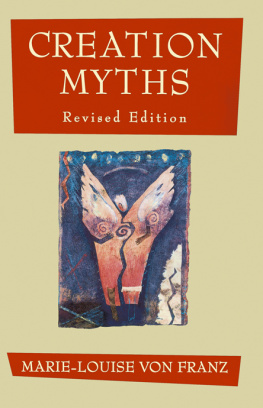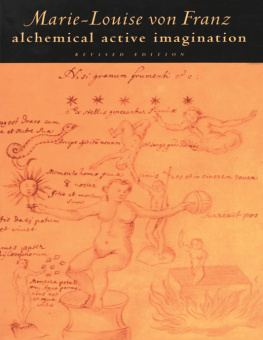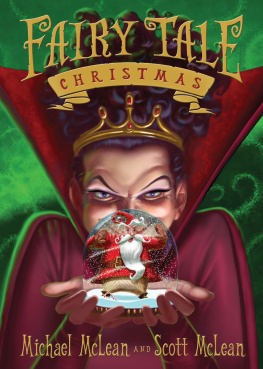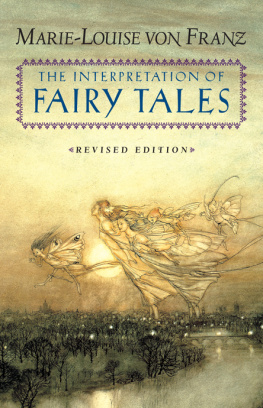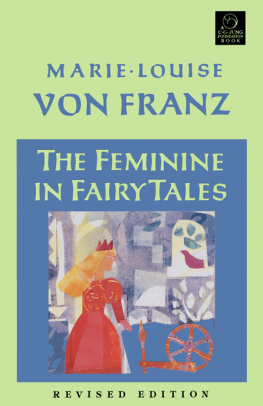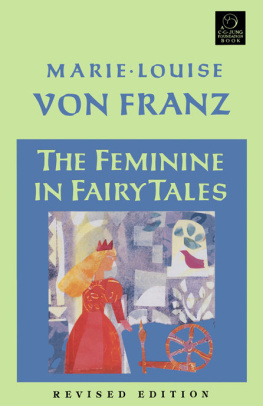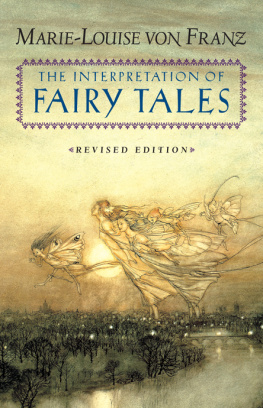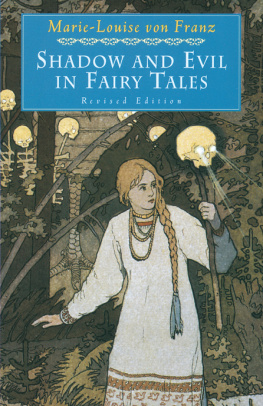Sign up to receive news and special offers from Shambhala Publications.

Or visit us online to sign up at shambhala.com/eshambhala.
A C. G. JUNG FOUNDATION BOOK
The C. G. Jung Foundation for Analytical Psychology is dedicated to helping men and women grow in conscious awareness of the psychological realities in themselves and society, find healing and meaning in their lives and greater depth in their relationships, and live in response to their discovered sense of purpose. It welcomes the public to attend its lectures, seminars, films, symposia, and workshops and offers a wide selection of books for sale through its bookstore. The Foundation also publishes Quadrant, a semiannual journal, and books on Analytical Psychology and related subjects. For information about Foundation programs or membership, please write to the C. G. Jung Foundation, 28 East 39th Street, New York, NY 10016.
SHADOW AND EVIL IN FAIRY TALES

Marie-Louise von Franz
REVISED EDITION
Shambhala
Boulder
2017
Shambhala Publications, Inc.
4720 Walnut Street
Boulder, Colorado 80301
www.shambhala.com
1974, 1995 by Marie-Louise von Franz
All rights reserved. No part of this book may be reproduced in any form or by any means, electronic or mechanical, including photocopying, recording, or by any information storage and retrieval system, without permission in writing from the publisher.
Library of Congress Cataloging-in-Publication Data
Franz, Marie-Louise von, 19151998
Shadow and evil in fairy tales / Marie-Louise von Franz.
p. cm.(A C. G. Jung Foundation book)
Originally published: Zurich: Spring Publications, 1974. Includes index.
EISBN 9780834840850
ISBN 9780877739746
1. Fairy talesHistory and criticism. 2. Psychoanalysis and folklore. 3. Shadow (Psychoanalysis) 4. Symbolism in fairy tales. I. Title. II. Series.
GR550.F72 1995 94-26600
398.2dc20 CIP
The text of this book comprises two lecture series given at the C. G. Jung Institute, Zurich: the first was The Problem of the Shadow in Fairy Tales, during the Winter Semester, 1957; and the second, Dealing with Evil in Fairy Tales, Winter Semester, 1964.
I am deeply grateful to Dr. Vivienne Mackrell for helping me with the revision of the text.
Part One


THE PSYCHOLOGICAL DEFINITION of the shadow, which we must bear in mind before going into our material, can vary greatly and is not as simple as we generally assume. In Jungian psychology, we generally define the shadow as the personification of certain aspects of the unconscious personality, which could be added to the ego complex but which, for various reasons, are not. We might therefore say that the shadow is the dark, unlived, and repressed side of the ego complex, but this is only partly true. Jung, who hated it when his pupils were too literal-minded and clung to his concepts and made a system out of them and quoted him without knowing exactly what they were saying, once in a discussion threw all this over and said, This is all nonsense! The shadow is simply the whole unconscious. He said that we had forgotten how these things had been discovered and how they were experienced by the individual, and that it was necessary always to think of the condition of the analysand at the moment.
If someone who knows nothing about psychology comes to an analytical hour and you try to explain that there are certain processes at the back of the mind of which people are not aware, that is the shadow to them. So in the first stage of approach to the unconscious, the shadow is simply a mythological name for all that within me about which I cannot directly know. Only when we start to dig into this shadow sphere of the personality and to investigate the different aspects, does there, after a time, appear in the dreams a personification of the unconscious, of the same sex as the dreamer. But then this person will discover that there is in this unknown area still another cluster of reactions called the anima (or the animus), which represents feelings, moods, and ideas, etc.; and we also speak of the concept of the Self. For practical purposes, Jung has not found it necessary to go beyond these three steps.
When we speak of the shadow, we have therefore to bear in mind the personal situation and even the specific stage of consciousness and inner awareness of the person in question. Thus at the beginning stage we can say that the shadow is all that is within you which you do not know about. In general, when investigating it, we discover that it consists partly of personal and partly of collective elements. Practically, when we first meet it the shadow is simply a conglomeration of aspects in which we cannot make out what is personal and what collective.
As a practical example, let us say that someone is born of parents quite different in character and inherits from both parents certain characteristics which, so to speak, do not mix well chemically. For instance, I once had an analysand who had inherited a fiery and brutal temperament from her father and an oversensitive touchiness from her mother. How could she be both people at the same time? If someone annoyed her, she was filled with two opposing reactions. In a child there are opposite possibilities which do not harmonize with each other. In the course of development, generally a choice is made between them so that one side becomes more or less established. Then comes education, which adds to this, and then habit, for by always choosing one quality and giving that attitude preference, it becomes second nature, and the other quality is swept under the table, though it still exists. From these repressed qualities, which are not admitted or accepted because they are incompatible with those chosen, the shadow is built up. With a certain amount of insight, and with the help of dreams, it is relatively easy for people to recognize these elements, and that is what we call making the shadow consciousand with that analysis usually comes to a stop. But this is no achievement, for then comes the much more difficult problem where most people have great trouble: they know what their shadow is, but they cannot express it much or integrate it into their lives. Naturally, those in the immediate surroundings do not like a person to change, for that means that they also have to readapt. A family will be simply furious when a hitherto mild and lamblike member suddenly becomes aggressive and says no to their demands. It leads to much criticism and, as the ego of the person concerned does not enjoy this either, the integration of the shadow may go wrong, and the whole problem gets stuck.
To have the courage to accept a quality which one does not like in oneself, and which one has chosen to repress for many years, is an act of great courage. But if one does not accept the quality, then it functions behind ones back. To see and admit the shadow is part of the problem, to say something has happened to me, something has leaked out; but the great ethical problem begins when one makes up ones mind to express the shadow consciously. That requires great care and reflection if it is not to have a disturbing effect. I want here to give you an example.
Next page
